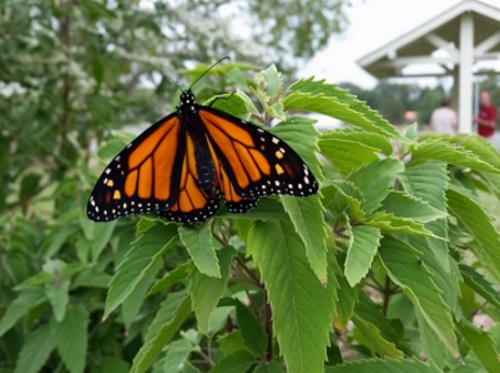The Transportation Research Board recently highlighted a bevy of resources available to state departments of transportation to support monarch butterfly habit and migration support efforts.
[Photo courtesy of the Virginia Department of Transportation.]
A new report from the TRB’s National Cooperative Highway Research Program – Evaluating the Suitability of Roadway Corridors for Use by Monarch Butterflies – provides guidance for roadside managers to determine the potential of their roadway corridors as habitat for monarch butterflies.
The report also includes several tools and decision-support mechanisms to optimize habitat potential in a manner that is compatible with the continued operation and maintenance of the roadside.
TRB noted in a blog post that a 2014 Presidential Memorandum “influenced” its recent research on monarch butterfly conservation – a memorandum that encouraged the Federal Highway Administration to work with state DOTs, transportation associations, and roadside managers as part of a holistic approach to promote the health of pollinators.
TRB added that forthcoming research from NCHRP will help craft a “guidebook” to help decision-makers tailor programs to maximize insect pollinator habitats along roadways. That guidebook will consider additional public benefits, roadway characteristics, and safety, as well as the geographical, adjacent land use, and ecological contexts. Butterflies and other pollinators are only a small subset of the wildlife benefiting from informed transportation planning.
In April, the U.S. Fish and Wildlife Service and the University of Illinois-Chicago signed what they called a “historic agreement” to encourage transportation and energy firms to voluntarily participate in monarch butterfly conservation by providing and maintaining habitat on potentially millions of acres of rights-of-way corridors on both public and private lands.
Both signed an integrated, nationwide candidate conservation agreement (CCA) and candidate conservation agreement (CCAA) for the monarch butterfly on energy and transportation lands throughout the lower 48 states.
The USFW noted that those formal yet voluntary agreements between the agency and both public and private landowners aim to conserve habitats that benefit at-risk species. It also “integrated” both CCA and CCAA programs so energy and transportation partners and private landowners can provide conservation seamlessly throughout their properties where there may be a mix of non-federal and federal lands.

